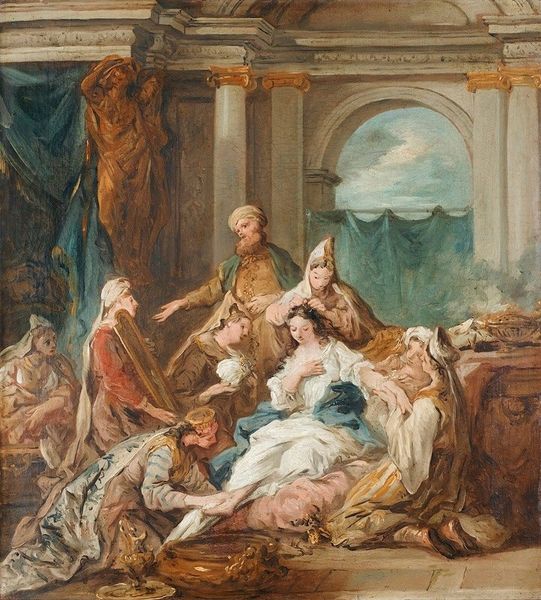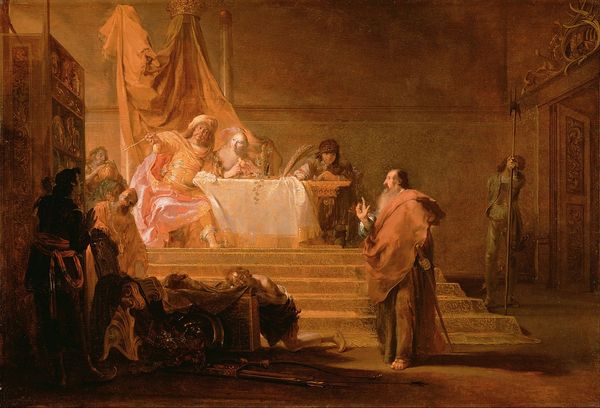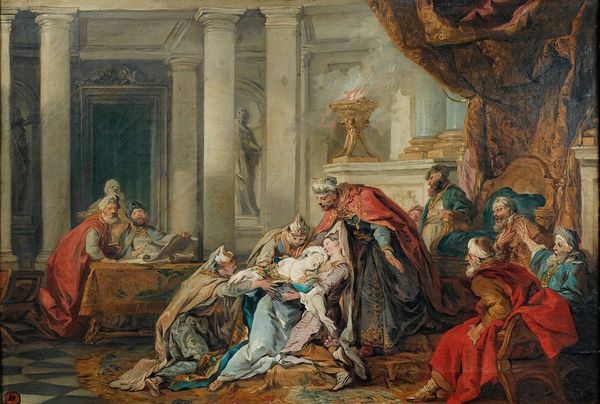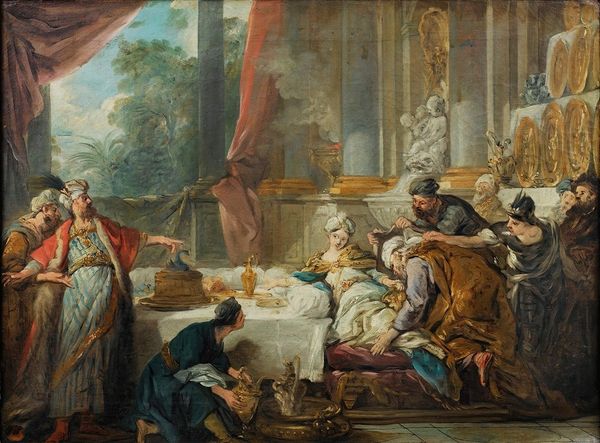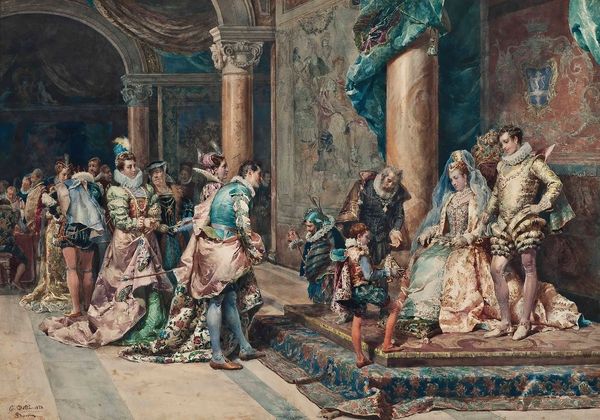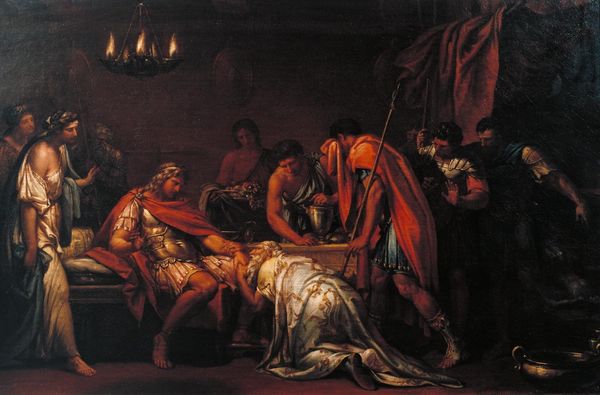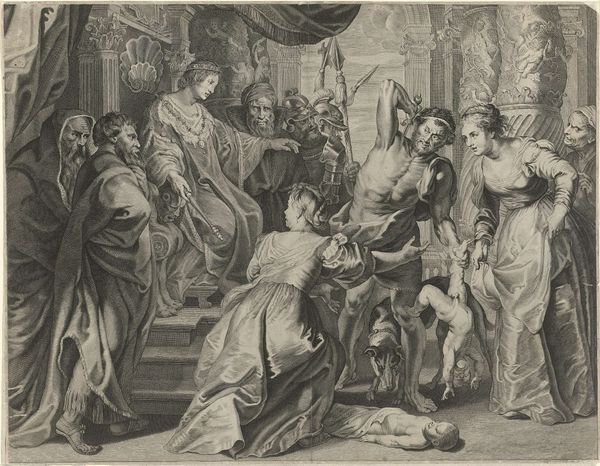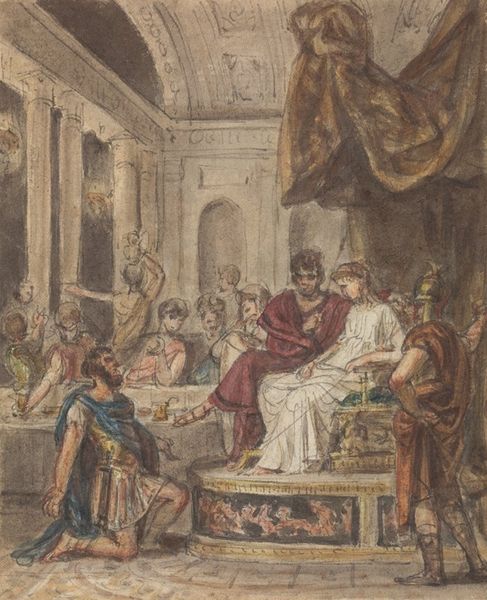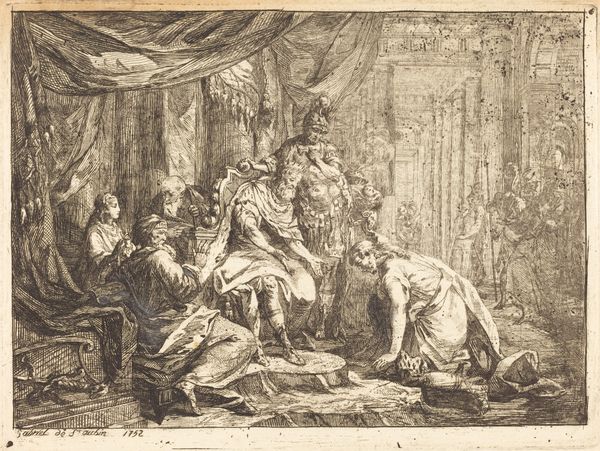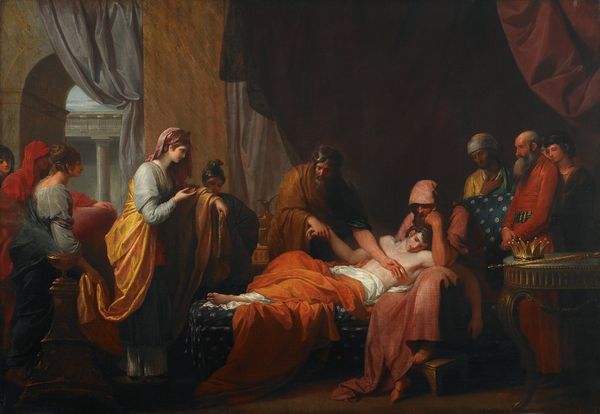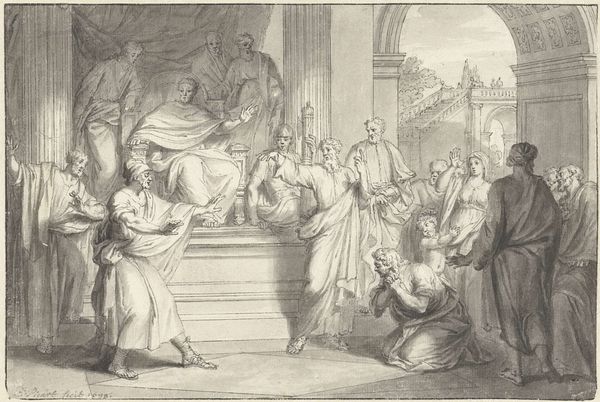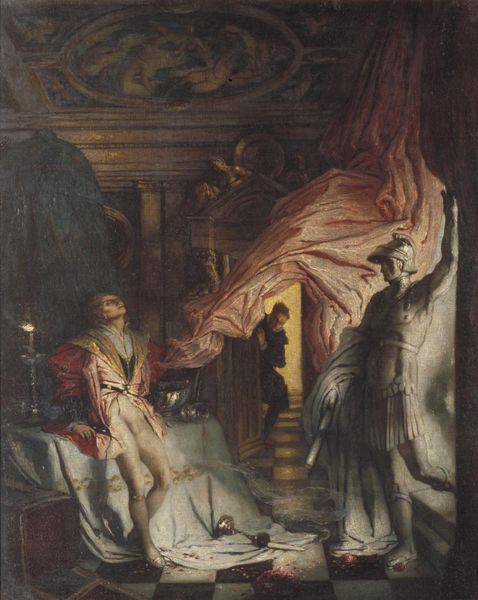
painting, oil-paint
#
allegory
#
narrative-art
#
baroque
#
painting
#
oil-paint
#
figuration
#
oil painting
#
history-painting
#
academic-art
#
mixed media
Copyright: Public Domain: Artvee
Editor: Here we have what appears to be an oil painting called "Condemnation of Hamans" by Jean-Francois de Troy. It feels quite theatrical, like a scene pulled directly from a play, and the dramatic lighting only reinforces that. What's your take on it? Curator: This theatricality, as you call it, is quite deliberate. We must consider the period, likely the early 18th century, when the Parisian Salon was becoming increasingly important as a public sphere for art. Paintings like these weren't just for private enjoyment; they were statements intended for debate and critical engagement. The "Condemnation of Hamans" engages with history painting, where artists aimed to elevate moral virtue and public service through grand narratives, often drawn from the Bible. Do you recognize the story? Editor: I can't say that I do, no. Curator: This painting depicts a scene from the Book of Esther. Esther reveals to her husband, the King, that Haman is plotting against the Jewish people. The King is enraged. We can see him gesturing, ordering Haman's arrest. The painting’s public role becomes clear. It promotes a vision of leadership that defends against injustice. And we must also understand the socio-political context in which it was viewed. Absolutist monarchies used visual imagery to assert divine right and lawful power. It also invites the viewer to engage in a debate, doesn't it? Who are the characters in contemporary society who assume this type of behaviour? Editor: That makes so much more sense. The placement of everyone, Esther reclined and almost unaffected by the ordeal, while the King makes accusations and commands action is so visually and socially calculated. It sounds as if history painting had to have that message, lest the elites become uneasy with the painter's messaging! Curator: Exactly! It wasn't just about artistic skill; it was about navigating the complex politics of imagery and representation in a courtly society. It reveals the role of art institutions like the Académie Royale, and how art was commissioned, consumed, and interpreted within specific social circles. Editor: That’s a completely different way to look at paintings from this period, I’ve learned so much more about the public responsibility assumed in these artistic renderings.
Comments
No comments
Be the first to comment and join the conversation on the ultimate creative platform.
